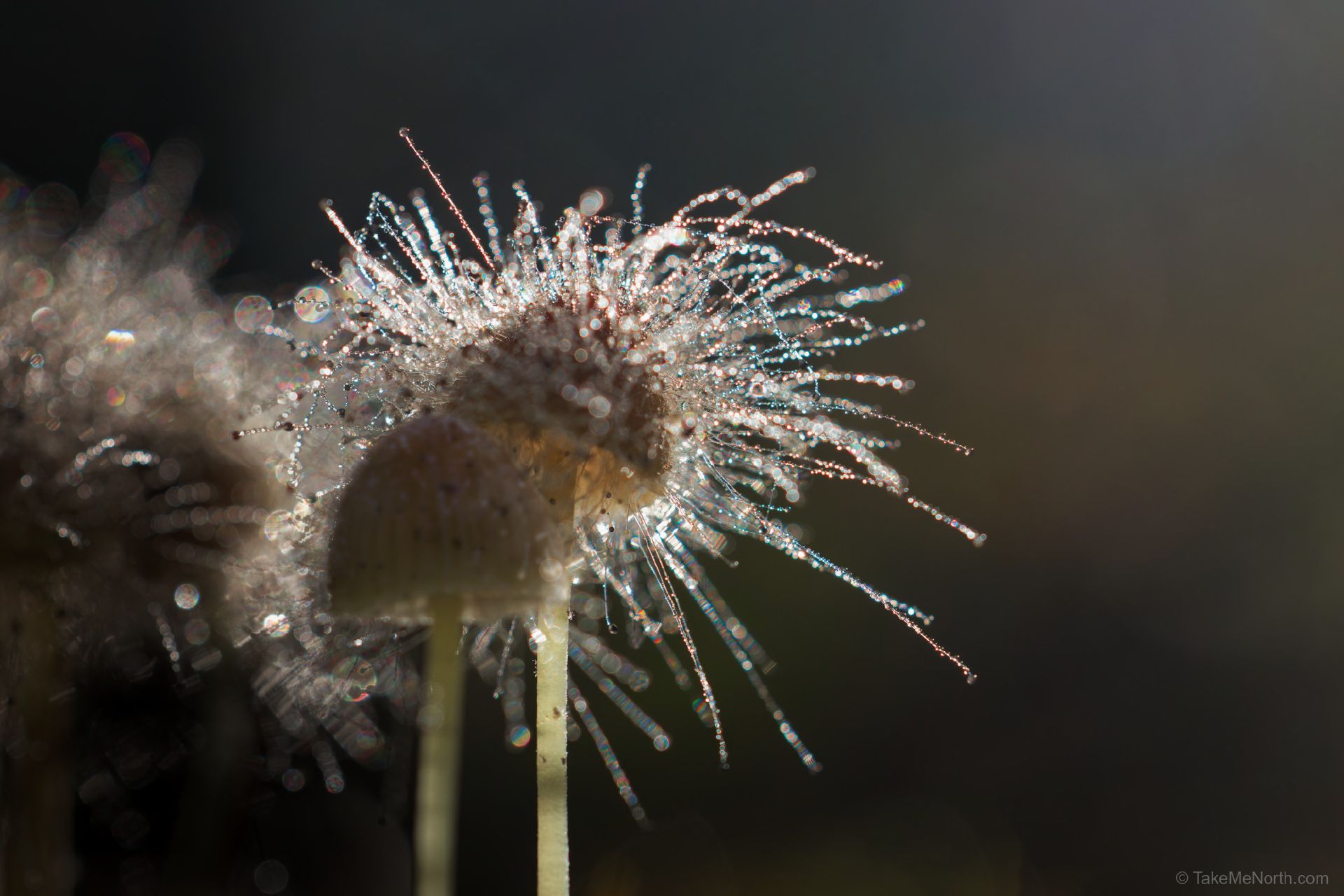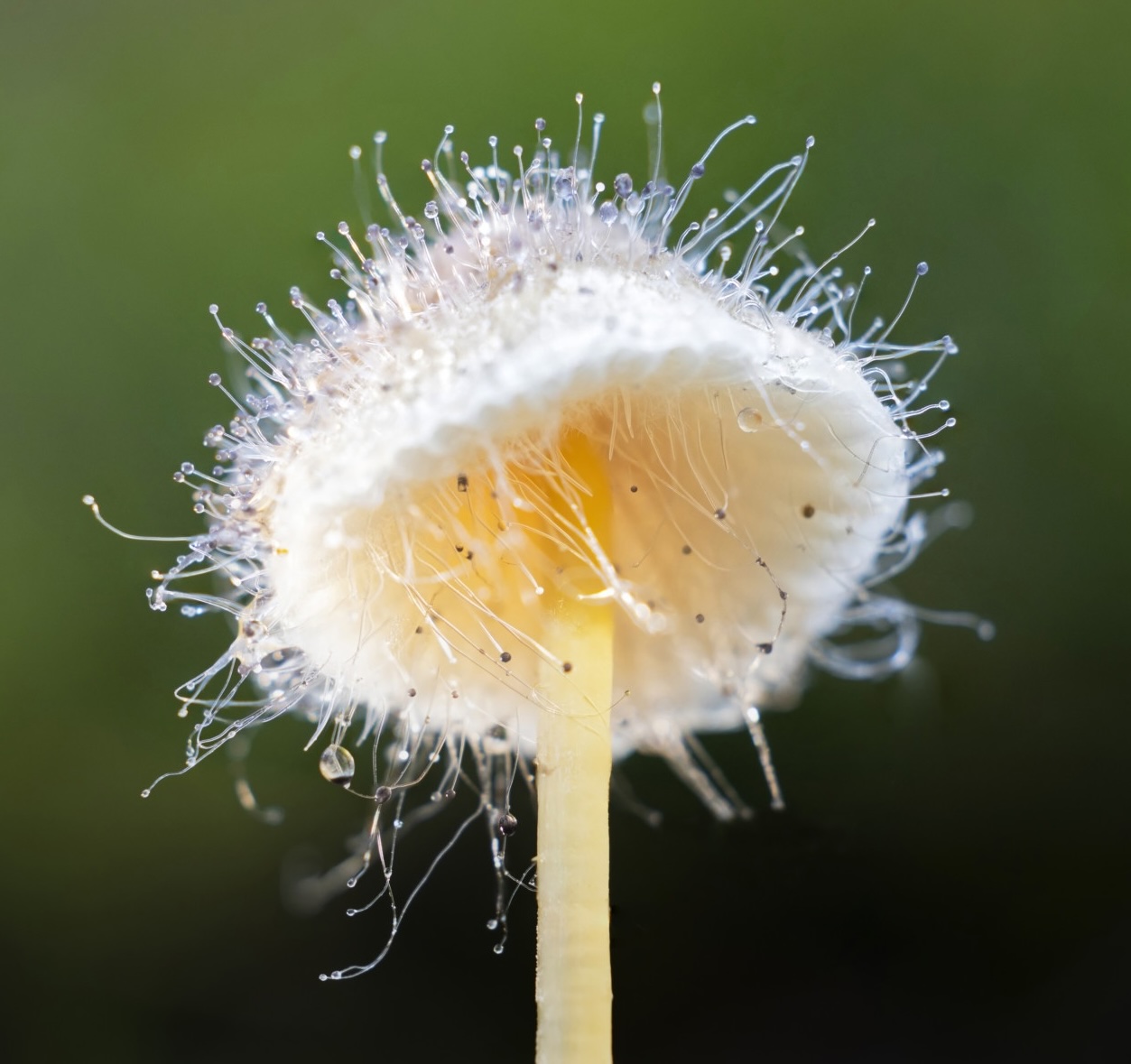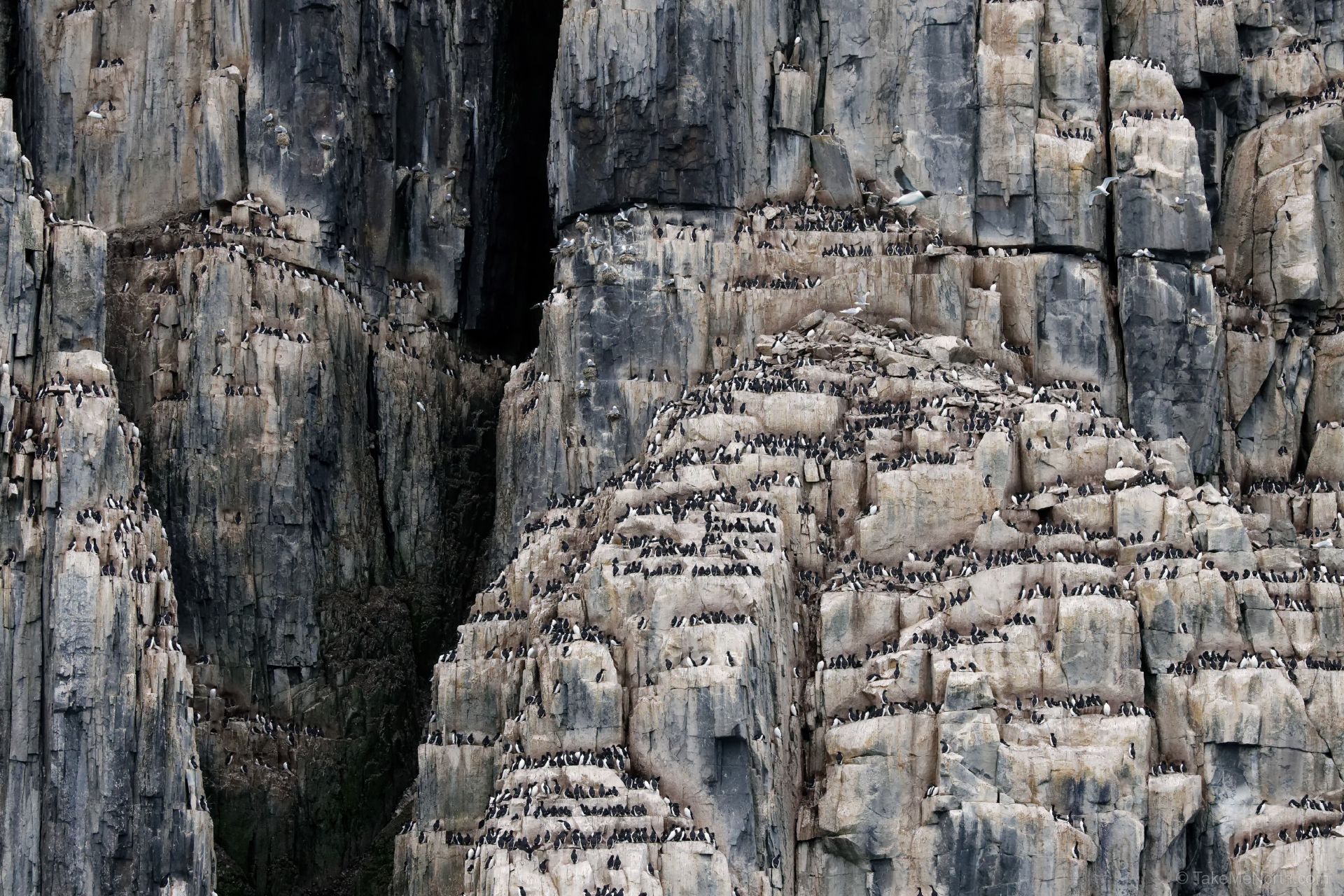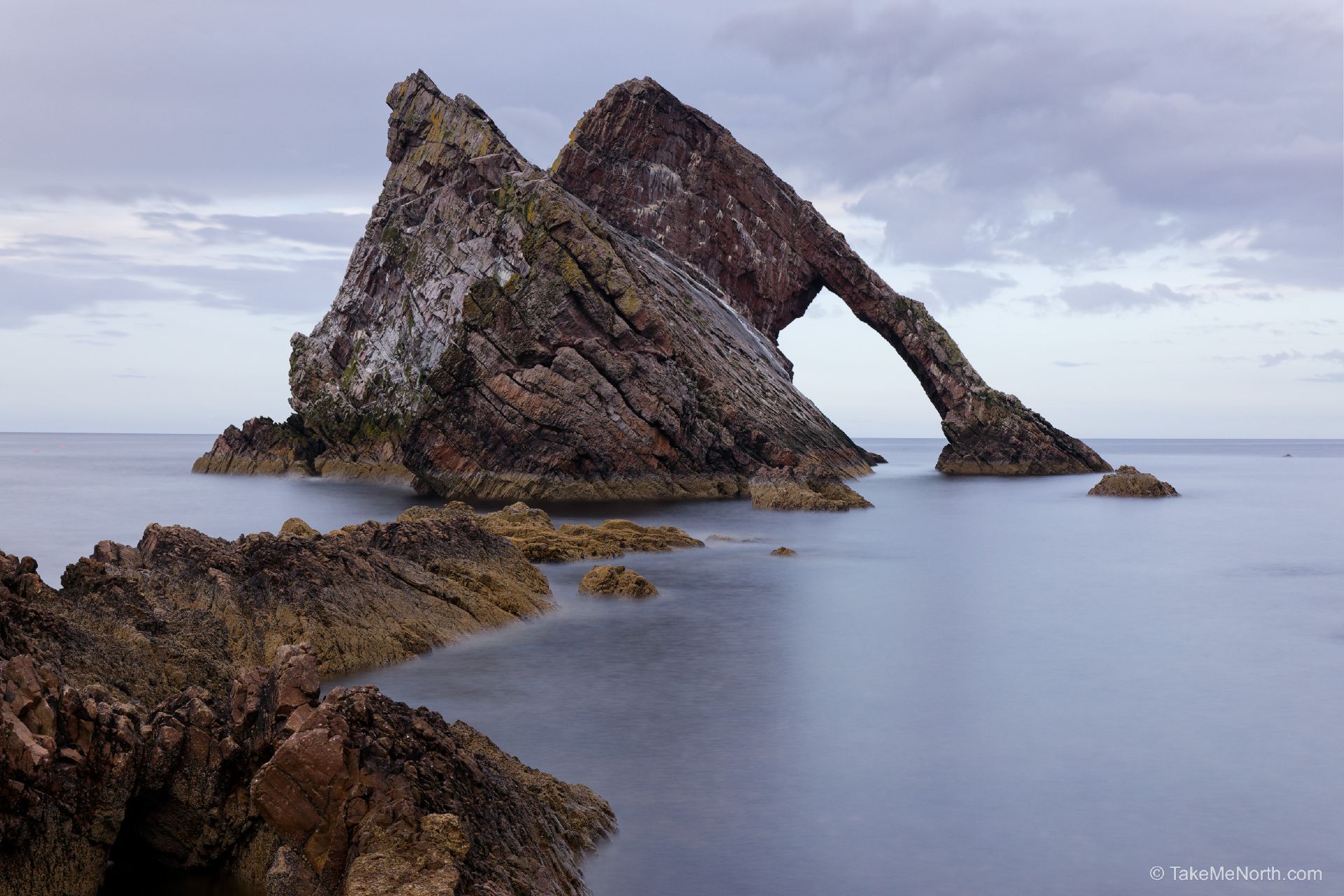Deep in the damp, shaded forests where fallen leaves and decaying wood create a thriving microcosm, an unusual fungal relationship unfolds: Spinellus fusiger, a parasitic fungus, attaching itself to the delicate Mycena mushrooms. Known for its ghostly appearance and bizarre structure, Spinellus fusiger gives Mycena mushrooms an almost alien look. With its spindly, hair-like structures extending from the mushroom caps, it could easily have been the inspiration for the sci-fi game and series The last of Us.
What Is Spinellus Fusiger?
Spinellus fusiger, often called pin mold, is a parasitic fungus in the Zygomycota division, known for parasitizing small mushrooms, particularly in the Mycena genus. Unlike the large fruiting bodies of most common mushrooms, Spinellus produces tiny, hair-like filaments called sporangiophores, each topped with a rounded spore-bearing structure (sporangium). These filaments grow from the surface of the Mycena mushrooms, creating an eerie, fuzzy appearance that can make the host mushroom look as if it’s been covered in cobwebs or delicate pins.
When seen up close, Spinellus fusiger reveals its intricate reproductive system. The dark, round sporangia at the ends of the filaments contain spores that, when mature, are released to find new host mushrooms to parasitize. This fungus only appears under particular conditions, thriving in damp, dark environments, usually in late summer and autumn when mushrooms are most abundant.
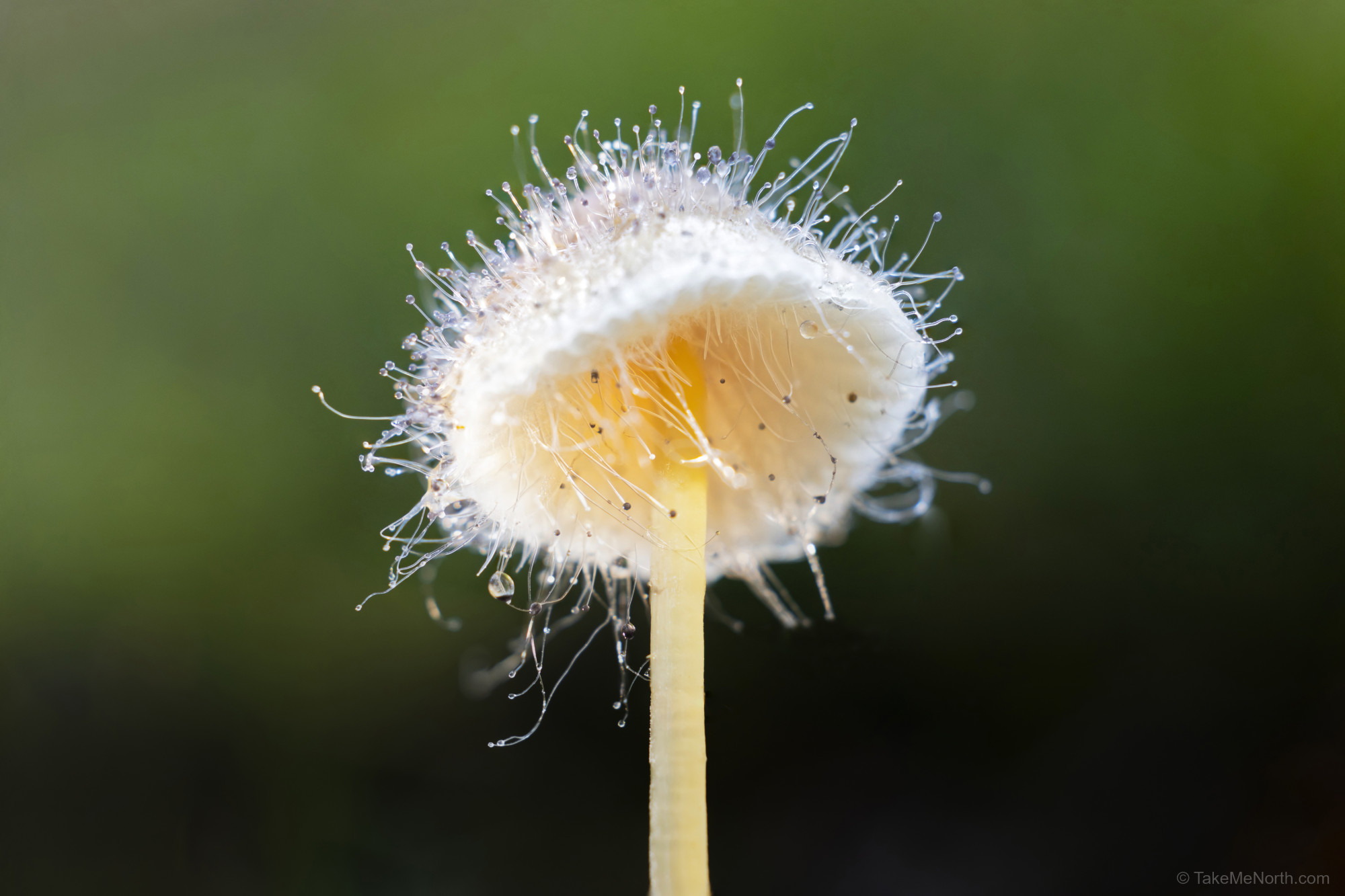
Pin mold on mycena
The lifecycle of Spinellus fusiger is finely tuned to the life cycles of its host mushrooms. It begins when the spores of Spinellus land on a suitable host, such as a freshly emerged Mycena mushroom. Under favorable conditions, the spores germinate and produce hyphae that penetrate the mushroom’s outer layers, drawing nutrients from the host. The hyphae grow outward, forming the characteristic sporangiophores that give Spinellus its pin-like appearance. Each sporangiophore ends in a sporangium, where new spores are produced. When mature, the sporangia burst, releasing spores that are carried away by air currents, animals, or water droplets, to land on another mushroom and begin the cycle anew.
The Parasitic Relationship with Mycena
The genus Mycena includes many small, delicate mushrooms often found on decaying wood or leaf litter in moist forests. These mushrooms, with their fragile caps and slender stems, are perfect hosts for Spinellus fusiger, which exploits the mushroom’s surface as a base for its reproductive structures.
This parasitic relationship is fascinating because Spinellus does not typically kill the Mycena mushroom. Instead, it uses the mushroom as a stable surface and nutrient source for producing its own spores. The Spinellus hyphae (fungal threads) penetrate the mushroom’s outer tissue, drawing nutrients from it, and then grow into the characteristic sporangia-bearing filaments that cover the mushroom cap and stem.
As a result, the mushroom becomes a vessel for Spinellus fusiger’s reproductive process, continuing its lifecycle by dispersing spores across the forest floor, where they might land on other mushrooms and begin the cycle again. While the Mycena mushroom may appear sickly or weakened by this interaction, it often survives the parasitism long enough to complete its own reproductive cycle, spreading its own spores as well.
The Strange Beauty of Spinellus on Mycena
The visual transformation that Spinellus fusiger imparts on its Mycena host is striking and somewhat otherworldly. The Mycena mushroom, often a subtle, neutral-colored organism, suddenly appears covered in a fine, delicate network of tiny black-tipped pins, making it look like something out of a fantasy novel. The black sporangia at the tips of the white filaments contrast sharply with the lighter mushroom cap, creating a dramatic, miniature landscape that is truly unique in the fungal world.
Ecological Role and Significance
Though Spinellus fusiger might seem like a minor player in the forest ecosystem, its presence underscores the complexity of fungal interactions and the intricate web of relationships that sustain forest biodiversity. By parasitizing mushrooms, Spinellus plays a role in moderating fungal populations. This parasitism can limit the spread of certain Mycena species, which, in turn, affects the decomposition rates of forest litter and the availability of nutrients in the soil.
The parasitic behavior of Spinellus also illustrates the concept of niche specialization in fungi. While many fungi live as decomposers, some—like Spinellus fusiger—have evolved to take advantage of other fungi, showcasing how diverse and adaptable fungal lifestyles can be. This kind of specialization is essential for biodiversity, allowing multiple species to coexist in the same ecosystem without directly competing for resources.
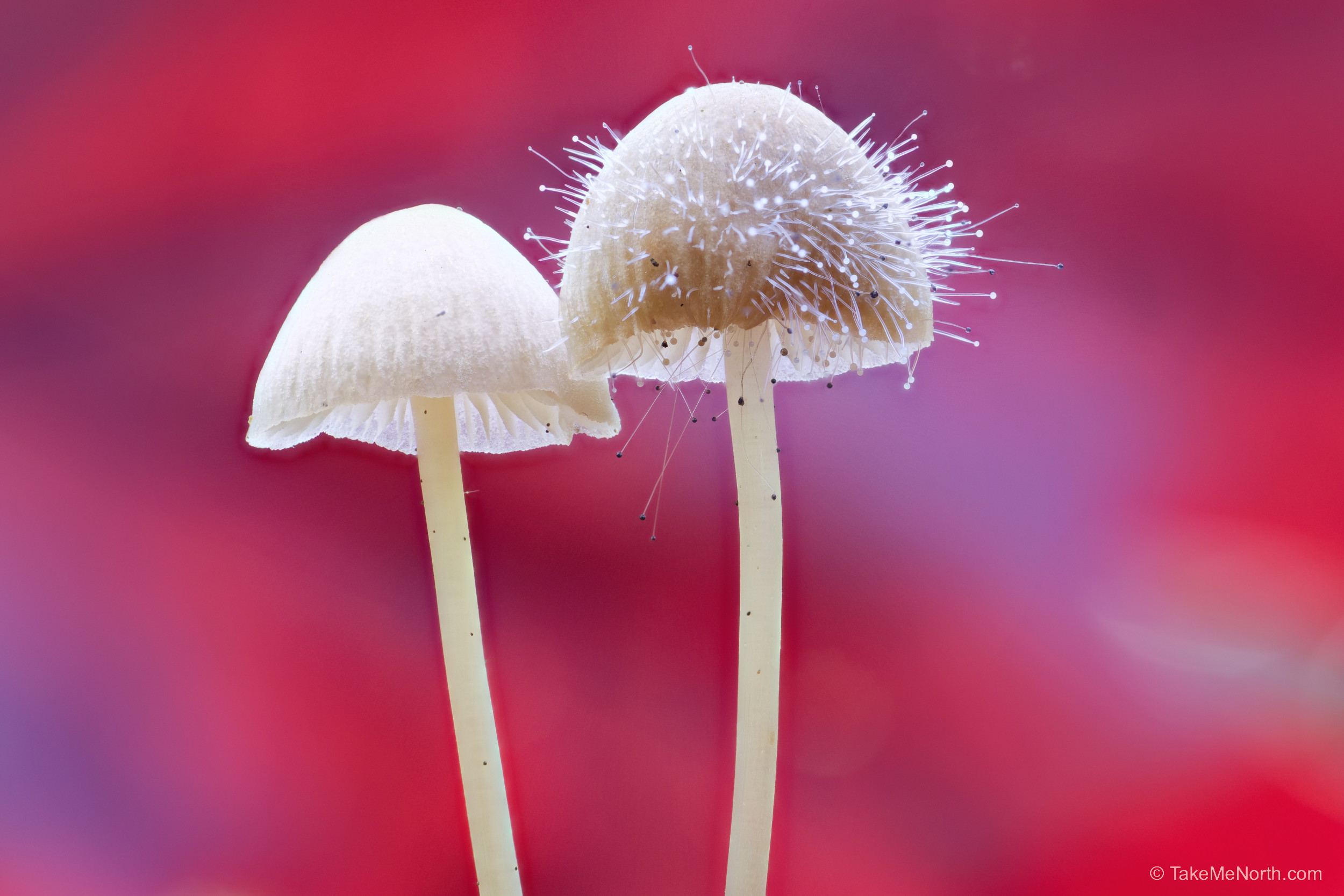
Pin mold on mycena
Encountering Spinellus Fusiger in the Wild
For those interested in seeing Spinellus fusiger up close, the best chances are in damp, temperate forests during late summer and autumn when mushrooms are abundant. Since Spinellus requires a host mushroom, the key to finding it is to first locate suitable Mycena mushrooms, which are commonly found growing on decaying wood, fallen leaves, or moist soil. Once a suitable host is found, look closely for the distinctive hair-like filaments of Spinellus. These tiny structures can be easy to overlook, so patience and careful observation are essential. The sporangia-bearing filaments of Spinellus will typically appear as fine, white hairs with dark tips, giving the mushroom a “fuzzy” appearance under low magnification.
